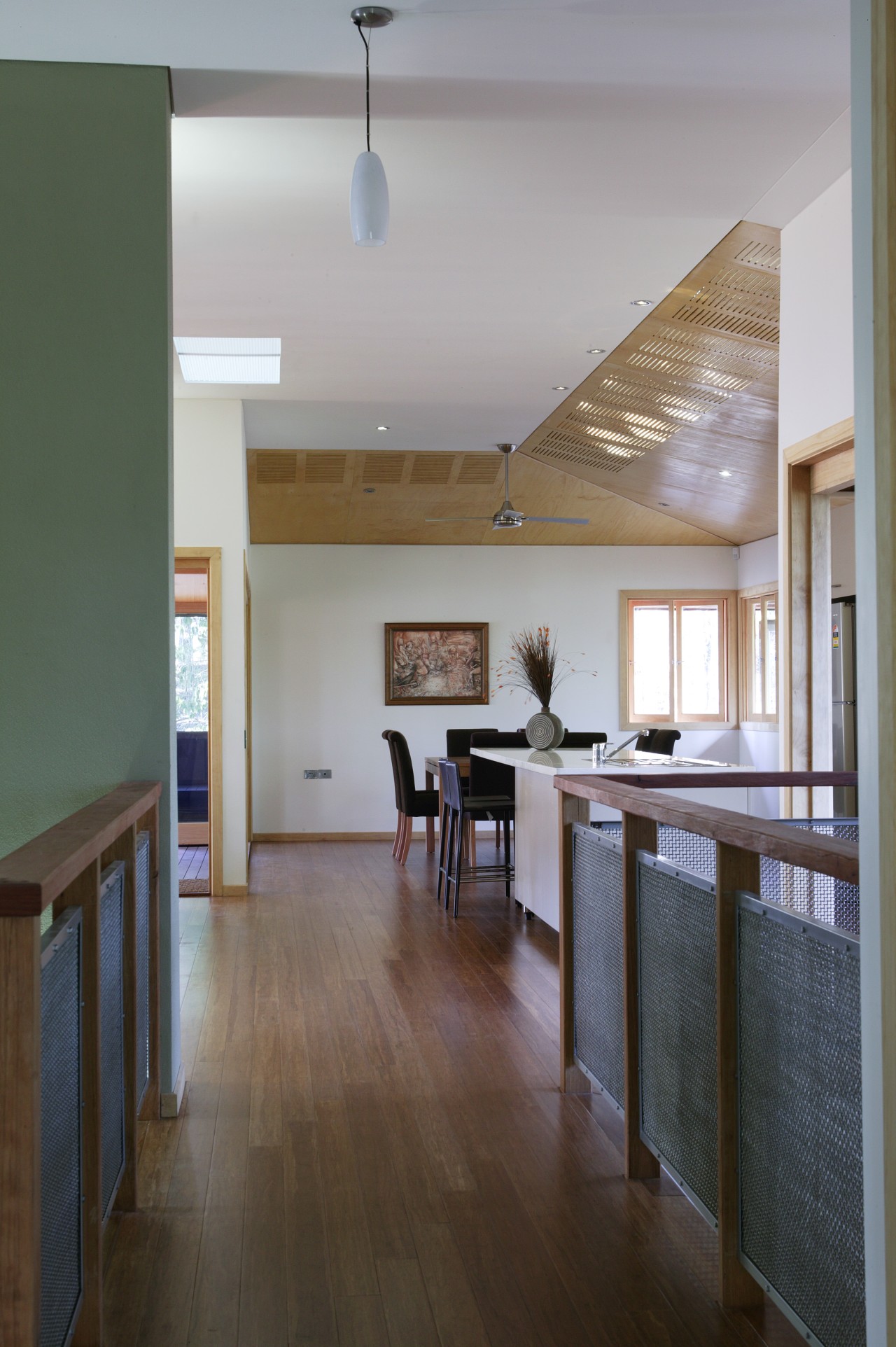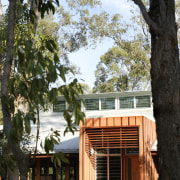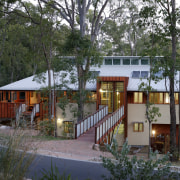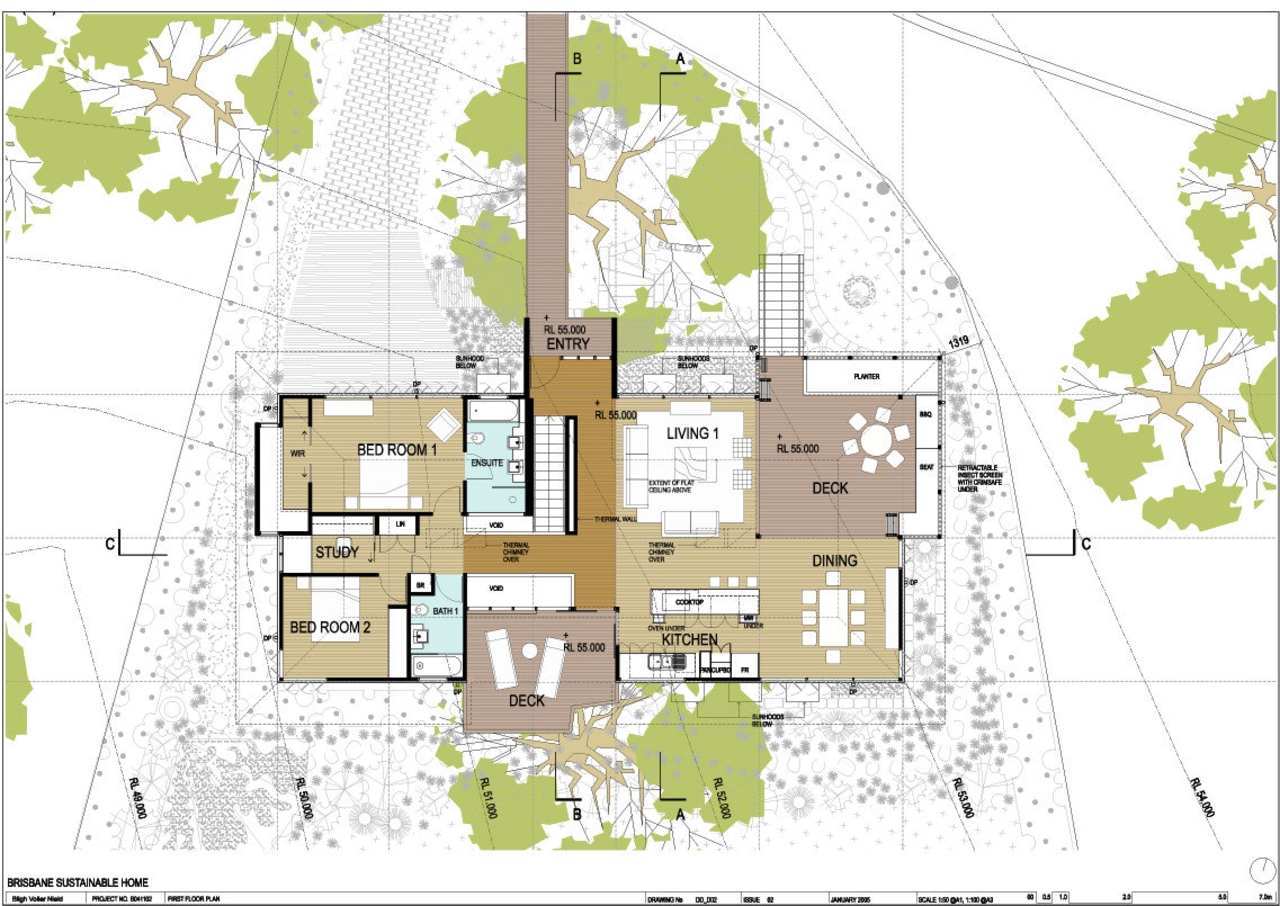Ultimately sustainable
Built as a show home for sustainable building practices, every aspect of this house is designed with conservation and the environment in mind
When you think sustainable housing, what comes to mind? For many it may be images of a building created entirely from mud bricks, while for others it could be an existing house with costly solar panels installed on the roof.
The house on these pages was created in an effort to quell these kinds of assumptions about sustainable housing. The Sustainable Homes Initiative sponsored and created a series of houses throughout Queensland, in an effort to demonstrate to the public that sustainable housing can be accessible, affordable and attractive. This house in Brisbane was created in association with the Australian Green Development Forum and builders Natural Lifestyle Homes. Bligh Voller Nield were the architects responsible for bringing the idea to reality. Project director Shane Thompson says the house was designed using readily available materials, and created to a modest budget.
"The Brisbane sustainable home meets the needs of an average family of two working parents and three children. There are no clever, expensive gadgets just common-sense initiatives and careful choices when it comes to materials and positioning, combined with contemporary aesthetics."
The house is located on a native bushland site in a new estate that was developed in an ecologically sensitive manner. The house is elevated to allow the natural flow of groundwater through the site. Thompson says this also minimises the amount of excavation required and helps to preserve the site's biodiversity.
"The house is two-storeyed, which helps reduce its footprint. Concrete pier footings and steel posts support the main floor frames. Renewable plantation pine is used for the framing; this is sheeted and insulated with QuiknTuff, a blend of recycled concrete and recycled polystyrene."
The finish on this exterior surface is a textured render, with integrated colour made from natural pigmentation. The upper level, shaded by the roof overhang, is clad in plywood. Window frames are made from plantation timber.
The interiors of the house are designed with Brisbane's hot and humid climate in mind. All commonly used rooms have windows on two sides to promote air circulation. On the upper floor, a large outdoor room adjoins the open-plan living, dining and kitchen area. Bifolding doors mean this area can be closed off if required, and screens around the edges provide protection from insects. Thompson says air flow is a huge part of making this house ecologically sustainable.
"In the hotter months, hot air rises and travels through vents in the ceilings, then out of louvred vents on the roof. In the winter, the louvres are closed, and hot air circulates throughout the house via solar-powered fans, instead of being trapped in the roof space. By using this natural phenomenon, called the stack effect, to promote air circulation, we avoid relying on artificial air conditioning or heating," he says.
Heating and cooling is also provided through the thermal mass of a concrete wall in the stairwell, with a void cavity. The wall is positioned to retain the sun's heat in the winter, while cool air radiates from the cavity in summer.
"The electricity the house uses is balanced by solar panels on the roof, which supply power directly to the national grid, giving the homeowner credits. Along with low energy rating appliances and lighting, the house gains a net power bill of zero."
This, combined with the inclusion of four water tanks, plumbed and filtered to supply every outlet in the house, means the building can be self-sufficient.
Aside from these conservation aspects, some universal design ideas have also been incorporated. The house provides easy access for a disabled or aged person, which means that if the residents wish, they can live there for a lifetime.
Thompson says the house features many environmentally sustainable methods but it is not necessary for potential homeowners or those with renovation projects to replicate the building as a whole.
"The hope is that architects, builders and homeowners can see how sustainability can be the accumulated effect of many little, yet smart decisions, not necessarily the product of large amounts of money or token gestures, and that people will take away at least some small method or idea that applies to their project, and use it."
Credit list
Interior designer
Driveway
Deck
Stairs
External walls
Sunhoods
Ceilings
Walls
Kitchen pendant
Builder
Driveway deck
Bridge
External paving
Timber above sill, balconies and western wall
Roof
Lighting
Flooring
Story by: Camille Butler

Bamboo X-treme Decking
Durable, stable and quick to install
Home kitchen bathroom commercial design












